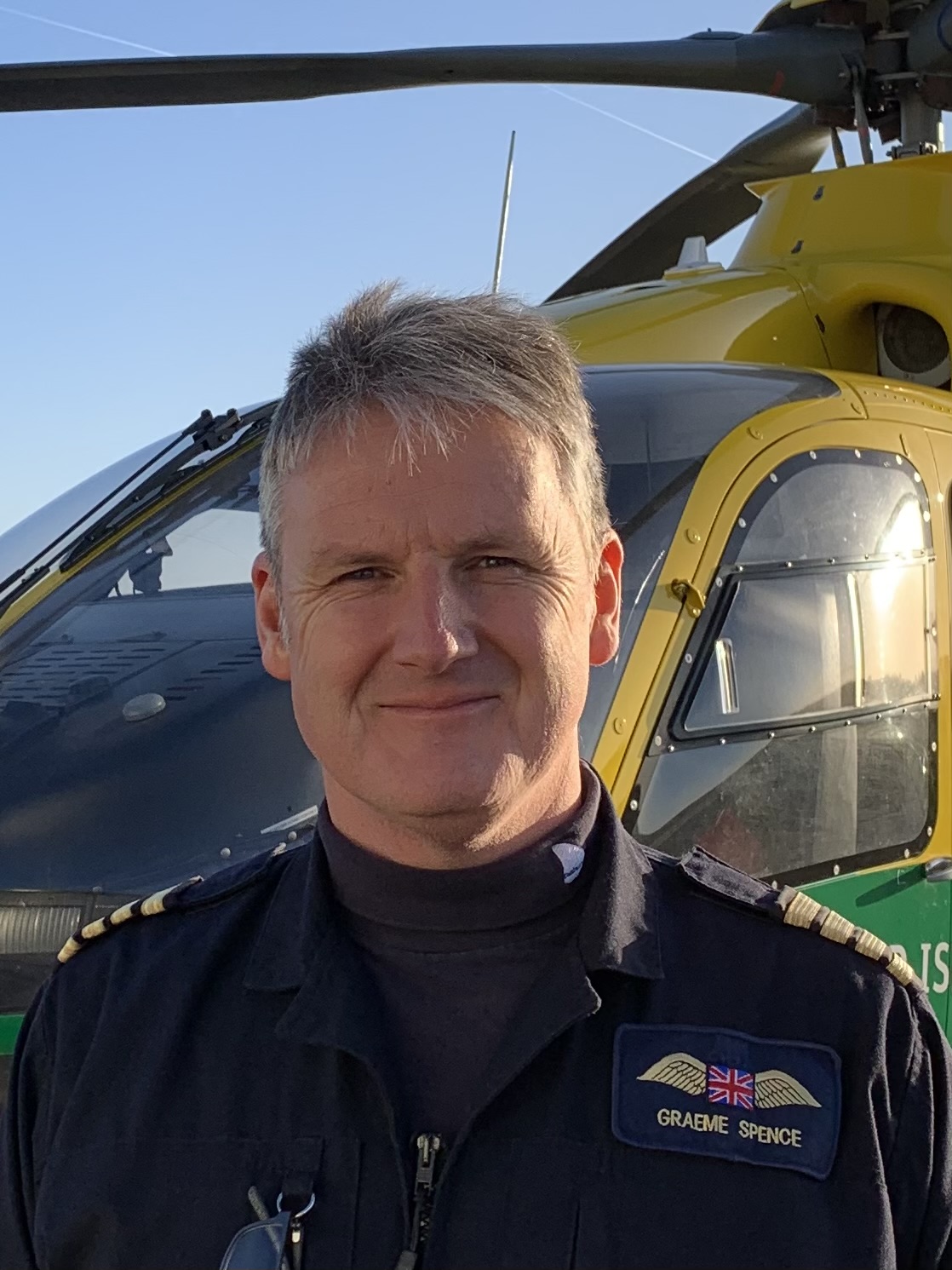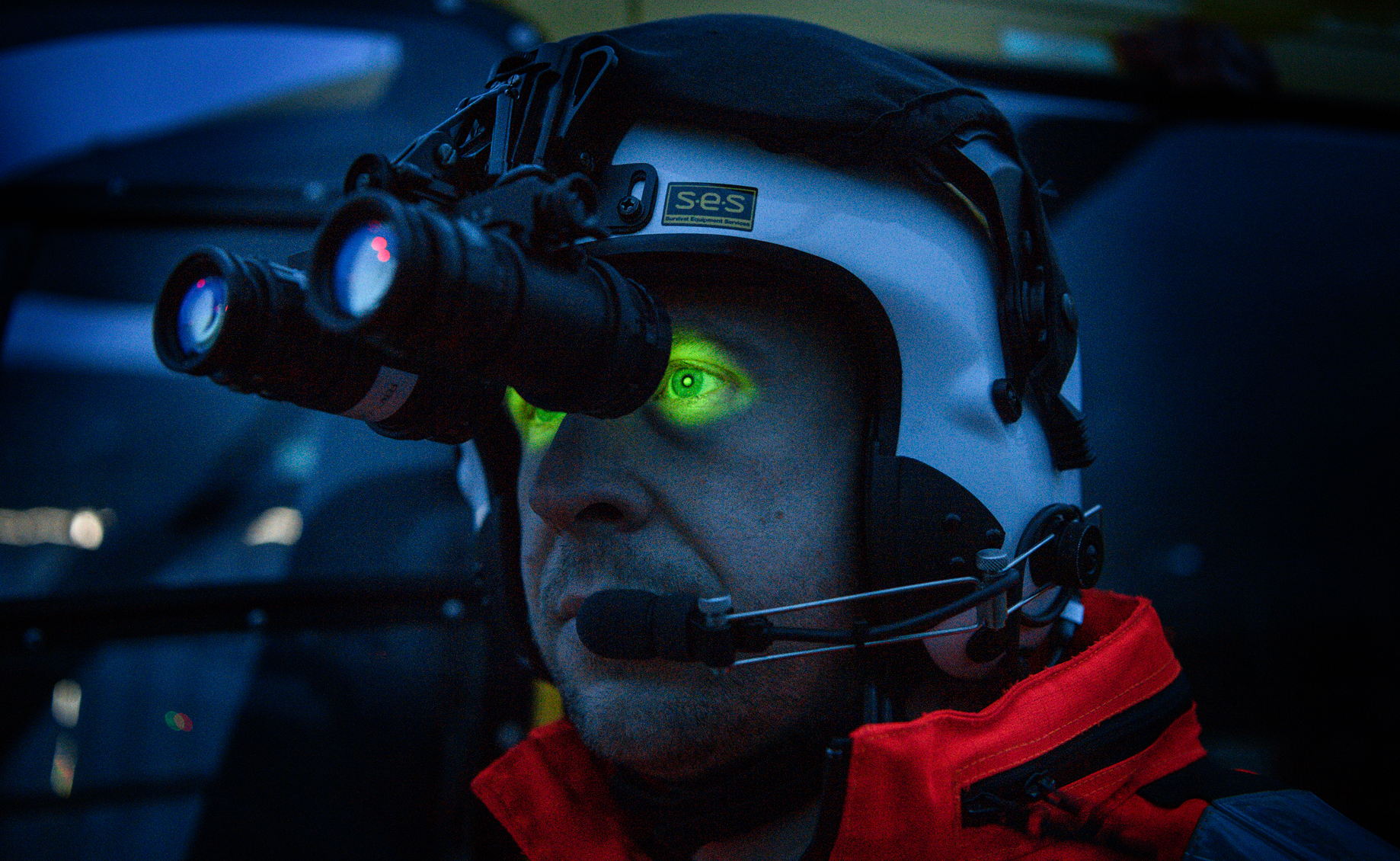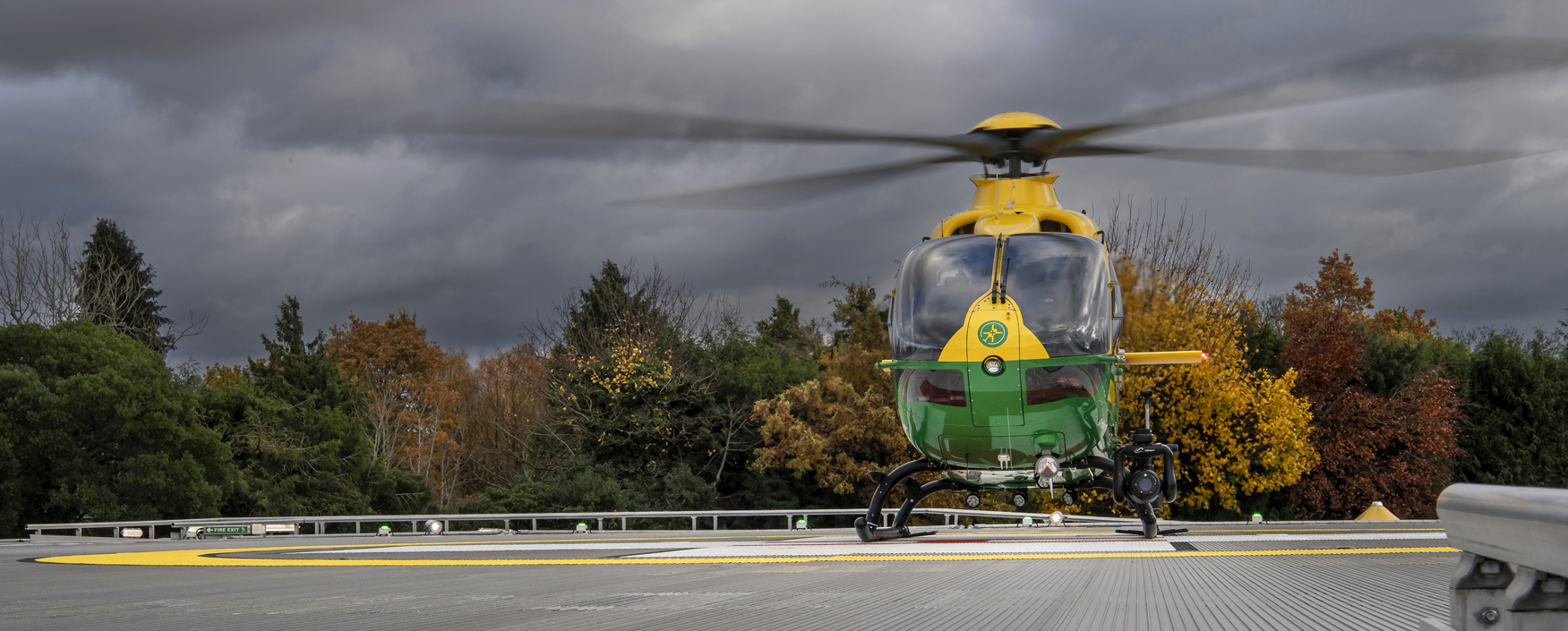There’s an enormous difference between flying during the day and at night. Tricky landings. Undetectable obstacles. Night vision goggles. But the team here aren’t afraid of the dark. In fact, almost 40% of our missions so far this year have been under the cover of darkness.
Pilot Graeme Spence MBE is no stranger to flying at night. Having begun his flying career in the Royal Navy, he is now a vital part of the team that gets our doctors and paramedics to the patient’s side, no matter where they are in our region.

Pilot Graeme has (briefly) swapped the night vision goggles for a notepad to answer some of your burning questions.
What are the significant challenges of flying in the dark that aren’t there in the day?
The obvious issue is that you can’t see very much, so navigation, collision avoidance and handling become more difficult. Seeing other aircraft and/or obstacles are the greatest challenge, especially when landing.
As we are one of the few charities which fly helicopter emergency medical service (HEMS) missions at night, we rely on night vision goggles (NVG) to effectively see in the dark. However, whilst NVG enable you to see in the dark, the image you view lacks depth perception and has limited peripheral vision which makes handling the aircraft more challenging, especially when manoeuvring close to the ground.
I’m constantly surprised by how small landing sites look from the air at night using Night Vision Goggles compared to how big they actually are once on the ground. pic.twitter.com/IQmLcIBUJR
— Air Ambulance Pilot (@Hems_Pilot) June 16, 2023
You mention NVG, what other equipment and training is vital for night operations?
We also need additional white visible/steerable lighting fitted to the aircraft and a radar altimeter to give us very accurate height information.
Each pilot and technical crew member must pass a training course to operate with NVG. This teaches them how to fly using the goggles as it requires different skills and procedures to flying by day. We also spend additional planning time using satellite imagery prior to each night HEMS mission in order to find suitable landing sites and identify potential hazards and obstructions.
How and why is teamwork heightened when flying at night?
Flying a HEMS mission can be very stressful at times. Often the most challenging missions are at night. We therefore recognise that teamwork is essential to overcome the challenges faced, such as maintaining a good lookout, operating additional lighting and identifying our landing sites. Not to mention the additional stress experienced if there is an aircraft emergency or equipment failure.
During these scenarios, it is hugely beneficial for the pilot to have another crew member beside them to assist with the safe handling of any emergency situation and subsequent landing.
What memorable experience have you faced while flying a HEMS mission at night?
As a HEMS pilot, you will often find yourself sitting in the dark in a rural area whilst waiting for an update from the crew. During one such occasion, I found myself starting to imagine I could hear all sorts of scary noises. After a while, having imagined all kinds of monsters that might be about to pop out of the dark, I felt a sudden thud on the outside of the aircraft.
Mustering all my bravery I opened the cockpit door to see what had caused the thud. As soon as I was about to step outside, a goat climbed up onto the step beside me letting out a loud bleat. I nearly jumped out of my skin. What I then discovered was that a ragtag bunch of animals that lived in a smallholding in a corner of the big open field I had landed in had come to investigate the helicopter. The goat was clearly the ringleader and the thud I felt at the back of the aircraft was caused by a horse prodding the tail with his nose.
No monsters were found, just a bunch of curious animals who wanted to check me out.
Why did you choose HEMS over other services, such as Search and Rescue (SAR)?
Both HEMS and SAR are hugely rewarding jobs and I’d be happy to do either. However, HEMS presents a different operating environment to SAR. HEMS is almost entirely confined to overland situations whereas SAR tends to operate overwater or in remote overland areas.
Generally speaking, HEMS operates with one pilot, so the challenge of being a single pilot (solely responsible for the safety of the crew and the aircraft) is professionally very rewarding.
When you take off on a shout, are you in contact with NATS or Southampton tower? Also, how are you directed through other air traffic?
We always talk to air traffic control (ATC) on every flight. Who we talk to will depend on where we are or what airspace we intend to fly in/through. It is vital to speak to air traffic control in controlled airspace which for us is mostly Southampton Radar.
When a HEMS helicopter is flying on a mission, we use an ALPHA prefix with our callsign. This alerts air traffic that we are on an emergency mission and gives us priority over all other airspace users to allow us to fly the most direct route to the scene of the incident. This usually means that air traffic directs all other traffic away from us if necessary.
Do all the local hospitals in Hampshire and the Isle of Wight have helipads?
Not every hospital has a helipad, but the major trauma centres do which is the main point. If a person requires the assistance of a HEMS team, then the likelihood is that they will need to be taken to a major trauma centre.
Has Graeme ever assisted in helping the crew in an emergency?
For the most part, the pilot does not get involved at scene, our job is to secure and prepare the aircraft for the next flight. However, there are times when we are first on scene – in which case I have assisted the team with very minor duties such as carrying equipment or holding fluid bags. We mainly get involved in carrying the patient on a stretcher and loading them into the aircraft.

When on emergency missions, do you need to communicate to ATC to fly straight from the Isle of Wight to mainland hospitals without using normal airways?
Helicopters on HEMS missions do not really need to use airways. We do need to communicate to ATC if we intend to fly within controlled airspace. Flying from the Isle of Wight to Portsmouth could be achieved without the need to speak to ATC as we do not need to fly in controlled airspace.
What’s the most difficult place you have landed and what made it so tricky?
Landing on top of hospital buildings in high winds can be tricky, as there can be a lot of turbulence to overcome. Landing in congested urban spaces present challenges as we must consider and minimise the impact of our downwash on members of the public or their property.
Perhaps one of the most challenging landings I’ve had was in rural Wales whilst responding to an injured person who had been hill walking/hiking. Due to the remote location and the steep slope of the hill, I was able to find a little ledge just big enough to safely land the helicopter, so the crew didn’t have to climb the entire hill to get to the casualty.



 Donate
Donate







